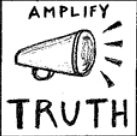 Say I am an average customer in the market for a brand new TV. I know little about technology and the merits of LCD or Plasma. I have heard about HD TV but I don’t really understand it. I do know that I will be watching DVDs, that I watch Satellite TV, and that I would like it to fit in my existing cabinet. Considering the average price ticket of the item I want, I want to make an educated purchase.
Say I am an average customer in the market for a brand new TV. I know little about technology and the merits of LCD or Plasma. I have heard about HD TV but I don’t really understand it. I do know that I will be watching DVDs, that I watch Satellite TV, and that I would like it to fit in my existing cabinet. Considering the average price ticket of the item I want, I want to make an educated purchase. What are the means of information available to me?
- My own knowledge & experience: I already have in my mind a series of conceptions about TVs and TV brands. This is an eclectic mix of what I have been exposed to recently and through past experiences. Advertisements, sponsors, signage, etc have familiarized me with a bunch of brands I am more or less attracted to for various reasons.
- New media and the web: I can google HD TV or LCD TV or PLASMA TV; I can read blogs and forums posts from consumers; I can visit manufacturers’ websites; I can read the blogs and website of Technology specialists (CNET, etc.)
- Magazines, TV, brochures, retailer catalogues and other traditional media: I will probably end up buying a couple of consumer technology magazines with reviews in them and watch some technological TV shows in my quest.
- Friends and relations: I will talk to people around me, particularly to those who have recently changed their TV and get their opinions.
- Stores: I will browse stores, look at designs, deals, ask the sales persons what is good and why, and I will begin to short list what I like.
 Buying a new brand is a bit like sleeping with a stranger (!) Sorry for the metaphor, but getting a new brand home is a bit like starting a new relationship.
Buying a new brand is a bit like sleeping with a stranger (!) Sorry for the metaphor, but getting a new brand home is a bit like starting a new relationship. Otherwise buyers turn to known brands for the reassurance of a continued happiness and the comfort of an existing relationship.

But on those aspects not all customers are born equal.
Some “fall in love” faster than others. They are simply more promiscuous.






 Google is about searching, organising, facilitating, presenting and delivering content. Google is in the content delivery business.
Google is about searching, organising, facilitating, presenting and delivering content. Google is in the content delivery business. Check the
Check the 
 One particular example is a research about Swans, where 999 swans observed around the world are white and one found in Australia is black. Although the probability that the next swan encountered will be white is very high (as per the base rate), research shows that the subject after observing a regional variation is suddenly more prone in believing that the next swan encountered in the same region could actually be black.
One particular example is a research about Swans, where 999 swans observed around the world are white and one found in Australia is black. Although the probability that the next swan encountered will be white is very high (as per the base rate), research shows that the subject after observing a regional variation is suddenly more prone in believing that the next swan encountered in the same region could actually be black. 



